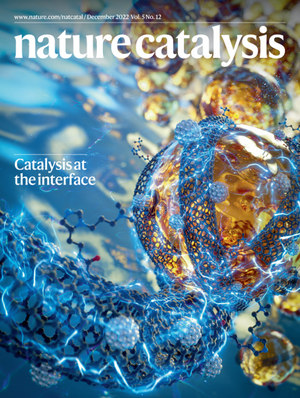The increasingly intensive and efficient use of renewable electricity is defined as a key enabler of the current energy transition toward a climate neutral energy-chemistry nexus. This electrification is affecting our societies not only in the private appliances, but also has a large impact on industrial sectors. In particular, it defines new challenges and opportunities for the defossilisation of the chemical industry. In the chemical sector, the synthetic conversion of organic compounds with hydrogen (i.e. hydrogenation) is a central step in the production of essential products, ranging from base chemicals and fuels to fine chemicals, agrochemicals and pharmaceuticals. While hydrogenation reactions are currently developed and performed using mainly gaseous molecular hydrogen (H2) as hydrogen source, a promising alternative consists in using directly renewable electricity and water as sources of electrons and protons, respectively. This approach, also known as electrocatalytic hydrogenation, is sustainable and thus perfectly suited to the foreseen electrification scenarii in the chemical sector.
The success of this strategy though pends on overcoming challenges that have so far severely limited applicability, including in particular the difficulty to convert water-insoluble organic compounds, low energy and resource efficiency of the overall process, and tedious product isolation.
In an article recently issued in Nature Catalysis, a team of scientists led by Dr. Nicolas Kaeffer and Dr. Alexis Bordet, group leaders in the department of Prof. Walter Leitner at the Max Planck Institute for Chemical Energy Conversion, have disclosed an original system that enables electrocatalytic hydrogenation of water-insoluble organic substrates at high efficiency. While precedent systems have used plain metal electrodes to separate aqueous (source of protons) and organic (containing organic compounds) phases, such approaches resulted in low efficiency. To tackle this challenge, the research team combined expertise on emulsions, surface molecular modification, nanoparticle-based catalysis, and electrocatalysis. In particular, the authors developed a Pickering emulsion system in which a large interface is generated between aqueous and organic phases and stabilized by solid particles – metal nanoparticles immobilized on a carbon support – that act as the electrocatalyst.
"The beauty of the system is not only that emulsions can transport electricity and act as extended electrodes, but also that improved performance is reached by running reactions at the interface of two phases, each containing a necessary reactant” explains Dr. Chenhui Han, first author of the article.
The system was applied to the electrocatalytic hydrogenation of a range of chemical building blocks, giving easy and efficient access to synthetically important intermediates and products.
"This study is an original exemplification of the potential of emulsions to enable the highly efficient electrocatalytic conversion of synthons that are incompatible with typically used electrolytes. Besides this proof of concept, we foresee that our approach can easily extend to a large array of synthetic transformations, as for instance in the area of biomass conversion” continue Dr. Alexis Bordet and Dr. Nicolas Kaeffer, the two leading scientists of this study.
Scientific Details
The scientists have developed a Pickering emulsion that compartments organic substrates and aqueous electrolytes in different phases. This emulsion enables efficient electrocatalytic hydrogenation at the interface. For this, the team designed and developed a multifunctional material composed of Pd nanoparticles immobilized on positively charged carbon nanotubes that localizes at the interface. This material is thus able to act as both emulsion stabilizer and electrocatalyst. Applied to the electrocatalytic hydrogenation of styrene, the system was shown to produce ethylbenzene at high faradaic efficiency (95.0%) and mass specific current density (–148.1 mA.mgPd−1). The system joins good substrate solubility, high conductivity and simplified product isolation. The approach could be applied to the conversion of various alkenes. The strategy is expected to provide alternative solutions to the electrocatalytic hydrogenation of substrates with low water solubility. Future directions will explore the applicability of this strategy to an extended array of chemical transformations, as for the conversion of bio-oil and biocrude.
Further Information: https://chemistrycommunity.nature.com/posts/electrifying-emulsions-for-highly-efficient-alkene-hydrogenation?channel_id=behind-the-paper
Original Paper: Han, C., Zenner, J., Johny, J. et al. Electrocatalytic hydrogenation of alkenes with Pd/carbon nanotubes at an oil–water interface. Nat Catal 5, 1110–1119 (2022). https://doi.org/10.1038/s41929-022-00882-4
Involved Groups:
- Max Planck Institute for Chemical Energy Conversion (C. Han, J. Zenner, J. Johny, N. Kaeffer, A. Bordet, W. Leitner)
- RWTH Aachen University (J. Zenner, W. Leitner)
Funding Acknowledgements
- Max-Planck-Gesellschaft (Max Planck Society)
- Deutsche Forschungsgemeinschaft (German Research Foundation) under Germany's Excellence Strategy – Exzellenzcluster 2186 ‘The Fuel Science Center’ (ID: 390919832)
- Max-Buchner-Forschungsstiftung (no. 3827, Alexis Bordet)

